A team of Japanese experts will visit India’s northeastern states in next three weeks to study the details for the survey for infrastructure development projects in the area, a top official said. The project is expected to start before the end of next year and will enhance connectivity and development in northeastern states, described by China as India’s “most neglected region”.
“The preparatory survey has already commenced for the infrastructure development project which will include reconstruction of roads and old bridges,” said Sinya Ejima, chief representative of Japan International Cooperation Agency (JICA), which provides technical cooperation and other forms of aid promoting economic and social development in India. “Our team of experts will visit the states barring Arunachal Pradesh in third week of January to do a detailed study and the work is expected to start by end of the next year,” Ejima said.
During a meeting between Prime Minister Narendra Modi and his Japanese counterpart Shinzo Abe in September when Modi travelled to Japan, the two leaders placed special emphasis on Japan’s cooperation for enhanced connectivity and development in Northeast India and linking the region to other economic corridors in India and to Southeast Asia, which would catalyse economic development and increase prosperity in the region.
Earlier this year, ahead of general election in India, China’s state-run Xinhua news agency had said “India’s northeastern states, which also include Manipur, Mizoram, Meghalaya and Nagaland are said to be the country’s most neglected region. Under the agreed project, Japan with an estimated US $100 million aid will reconstruct roads and improve other infrastructure in these states.
Apart from infrastructure development in North Eastern states, JICA is also actively assisting Delhi Metro project, which is in its third phase. JICA is also providing assistance to Delhi-Mumbai Industrial Corridor (DMIC) and the Chennai- Bengaluru Industrial Corridor (CBIC) in South India, as well an assistance to strengthen Japan-India academic-industry networks, and human resources development for industries such as manufacturing.
The Japanese Agency is also associated with various projects relating to sewerage and water supply in India with a total loan commitment of Rs 28,660 crore in Delhi, Uttar Pradesh, Rajasthan, Punjab, Odisha, West Bengal, Tamil Nadu, Andhra Pradesh, Kerala, Karnataka and Goa. Ejima informed that current commitment of JICA’s assistance in urban sector including water and transport is of the order of Rs 2,40,000 crore.
The city government has informed the Delhi High Court that there is a shortage of 152 trained Urdu teachers and the process of appointment was already underway.
The submission came in an affidavit filed by Delhi government’s Directorate of Education (DoE) before a bench of Chief Justice G Rohini and Justice R S Endlaw while hearing a PIL filed by lawyer Mushtaq Ahmad on behalf of NGO Shiksha Seva Samiti and some other societies.
“DoE had assessed an additional requirement of 152 TGT (trained graduate teachers) Urdu posts and the process of creation thereof is in the pipeline. There exists some shortage of regular Urdu teachers for which necessary requisition had been sent to Delhi Subordinate Service Selection Board and the process of appointment is going on,” the affidavit said.
It also submitted that most of the universities in country do not have Urdu as a medium of instruction at graduation level in any discipline which has led to non-availability of Urdu trained graduate teachers.
“Urdu teachers under the Sarva Shiksha Abhiyan are also appointed every year on contract basis to overcome shortage of Urdu teachers. There exists no shortage of Urdu teachers in schools where Urdu is taught as a language and so also in Urdu medium schools,” the affidavit said.
The city government also told the bench that DoE had deployed teachers from Urdu Academy in the Urdu medium schools to teach subjects like Mathematics, Science, Social Science in Urdu medium.
“There are 228 government schools under the DoE, GNCTD in which Urdu is being taught as a language and in addition to this, there are 21 government schools under the DoE, where Urdu is the medium of instructions,” the affidavit added.
The PIL was filed with the request that appointment of Urdu teachers may be made like that of other teachers, that all vacancies of Urdu teachers must be filled up and Urdu schools which have been closed down should be reopened and teachers appointed there.
Never the one to shy away from an on-field showdown, feisty Indian batsman Virat Kohli said being called a “spoilt brat” by the Australians brought the best out of him as he smashed a career-best 169-run knock to keep the touring side afloat in the ongoing third cricket Test here today.
“It was going on throughout the day. They were calling me a spoilt brat and I said ‘maybe that’s the way I am. You guys hate me and I like that’. I don’t mind having a chat on the field and it worked in my favour I guess,” a combative Kohli said at the end of third day’s play which India finished at 462/8, still trailing by 68 runs.
“I like playing against Australia because it is very hard for them to stay calm and I don’t mind an argument on the field and it really excites me and brings the best out of me. So they don’t seem to be learning the lesson,” said Kohli.
The most dramatic moments of the day involved Kohli in a verbal spat with Mitchell Johnson after the pacer ended up hitting the Indian while attempting to run him out.
Talking about Johnson, Kohli said, “In Brisbane he was batting without pressure because that’s not his job. His job is to take wickets and he was going at 4.7 an over today, and he didn’t get a wicket throughout the day and I backed myself to take him on even if I keep talking to him.
“I decided whenever he comes on to bowl I will back myself and take him on. I don’t mind having a word back, neither does he, so we kept going at it.”
Kohli and Ajinkya Rahane put on 262 runs for the fourth wicket in reply to Australia’s first innings total of 530 runs. There have been a lot of heated moments in this series and Sunday’s incidents were just another chapter to that saga.
“They have the right to talk I guess. They are 2-0 up right now. It would have been interesting if it had been 1-1 and the same sort of sentences or words had come through from them. When you are on top you can sort of say anything you want.
“It’s when chips are down that you have got to stand up. When we played in India (in 2012-13) there weren’t so many words coming back from them. We are 2-0 down, we still took them on today, and showed what we can do with the bat, which is the character of this Indian team,” said a defiant Kohli.
When asked if he respected the Australian team, Kohli replied, “I have got a nice friendship with a few of them. I respect quite a few of them, but someone who doesn’t respect me I have no reason to respect him.”
“There were words in Adelaide as well where they said no unnecessary respect for him. I said I don’t need it. I am out here to play cricket, not to earn anyone’s respect. As long as I am scoring runs, I am happy with it.”
Kohli said he relishes the challenge of playing against Australia and was delighted with the way the third day turned out for his side.
“I am very proud of the way we played today and we backed ourselves throughout. I am not disappointed at all. Before coming here I told myself I am going to be positive. There is no reason why I should change my game from ODI cricket to Test cricket because sometimes we end up thinking too much and forget about playing our natural game,” said Kohli.
“You saw Ajinkya Rahane today and he crossed me to a hundred and that was brilliant. At no point did I tell him to back off and not play his game and that is what is working for us as a batting unit,” he added.
Kohli and Rahane came together at the crease when India were 147/3 in the morning session and then weren’t separated until after tea.
They became the first pair to post 200-plus for the fourth wicket at this ground. Rahane scored 147 runs while Kohli scored his fourth Test hundred in Australia and third of this series against this opposition.
“I was criticised for not getting big hundreds. It is disappointing to get out on 115 or 120 after having done all the hard work so those are the times when I told myself to take more time. Today I got a good feel of building up a big hundred, so did Rahane which is good for the team.
“If you get big partnerships we give ourselves more chances of being in the game wherever we play. It’s all about correcting your mistakes and learning from your innings be it a hundred as well. Next time if I am in a situation again, I will want to convert it into a double hundred,” Kohli said.
“I was actually a little surprised the way Rahane went after Johnson, clearing his leg and all. He is a compact player, and I didn’t know he was going to go after him in this surprising way. But it was pleasing to watch, a guy backing himself, playing for the first time in Australia, taking a bowler on who is looking to get into rhythm, who bowls long spells for them, who bowls quick, who bowls good bouncers,” he added.
Australia were disappointing in the field on the day as they dropped three very easy chances.
“They set very high standards for themselves in the field. Today it was actually surprising to see them dropping three catches, so many misfields and easy singles for us. I don’t remember the last time I have seen them being inconsistent in the field,” said the batsman.
“It would have been nice had I not got out. But still we have Mohammad Shami who is playing well, and Umesh Yadav can play the big shots too. We will try to get close to 500 runs, and then if we can get two or three quick wickets it will be an enjoyable game,” Kohli signed off.
As many as 102 militants were killed while 29 Army men lost their lives in counter-terrorist operations in Jammu and Kashmir this year.
“102 terrorists have been killed during the year, 47 were apprehended and one surrendered in operations in Jammu and Kashmir this year,” Defence PRO Col S D Goswami said.
“The proponents of the proxy war were desperate to push in terrorists by attempting maximum infiltration to disrupt the Assembly elections. Many infiltration bids were foiled by the Army,” he said.
Army also recovered 394 different types of weapons in different operations along the LoC and in hinterland in the state, he said, adding that terrorists had planted 15 IEDs, but these were detected and defused by the Army, averting major tragedies.
Army suffered 29 fatal casualties and 45 non-fatal casualties in counter terrorist operations in the state during the year, the PRO said.
“Army is an apolitical force and does not get involved directly in electoral process. Army had a role of ensuring a safe and secured environment for the conduct of free and fair polls and we did that by being vigilant and carrying out relentless operations with surgical precision based on accurate intelligence which resulted in (the process being) devoid of any interference by terrorists,” he said.
“The security situation of J&K has a direct linkage with the infiltration through IB and LoC from across the border,” he said.
“We are giving primacy to preventing infiltration by adopting a robust counter infiltration strategy which has an appropriate mix of technology and human resources, while we simultaneously degrade the remaining terrorists in the hinterland,” the PRO said.
“The terrorist threat remains real as the terrorist infrastructure across the border remains intact,” he said.
An AirAsia Indonesia airliner flying from Indonesia to Singapore with 162 people on board has gone missing.
Flight QZ8501 lost contact with air traffic control at around 06:20 local time (23:20 GMT) over the Java Sea.
The plane, an Airbus A320-200, disappeared midway into the flight of more than two hours from the city of Surabaya. No distress call was made.
Bad weather was reported in the area, and an air search operation has now been suspended for the night.
Planes from Indonesia and Singapore had been scouring an area of sea between Kalimantan (Borneo) and Java. Some boats are reported to be continuing to search as night falls.
No wreckage has been found, an Indonesian official told the BBC.
The flight left the Indonesian city of Surabaya in eastern Java at 05:20 local time (22:20 GMT) and was due to arrive in Singapore at 08:30 (00:30 GMT).
The missing jet had requested a “deviation” from the flight path due to storm clouds, AirAsia said.
Indonesia’s transport ministry said the pilot had asked permission to climb to 38,000 ft (11,000m) to avoid thick cloud.
AirAsia, a budget airline which owns 49% of AirAsia Indonesia, is based in Malaysia and has never lost a plane.
However, 2014 has been a difficult year for aviation in Asia: Malaysia’s national carrier Malaysia Airlines has suffered two losses – flights MH370 and MH17.
Flight MH370 disappeared on a flight from Kuala Lumpur to Beijing in March with 239 passengers and crew. The wreckage, thought to be in southern Indian Ocean, has still not been located.
MH17 was shot down over Ukraine in July, killing all 298 on board.
Flight QZ8501 was supposed to arrive early this morning. Hours later the families of the passengers gathered here have very little information.
Airport officials are keeping them well away from the media and trying to make them comfortable.
The AirAsia incident comes at the end of a difficult year for air travellers in the region, and the scenes at Changi airport today are reminiscent of those in Kuala Lumpur immediately after MH370 went missing in March: anxious relatives waiting for any news on their loves ones, a media frenzy, but no answers.
The Airbus, pictured here on an earlier flight, disappeared about an hour after takeoff
Emergency contact
There were 155 passengers on board, the company said in a statement:
- 138 adults, 16 children and one infant
- Most on board were Indonesian
- Several were from other countries: one UK national, a Malaysian, a Singaporean and three South Koreans
- Two pilots and five crew were also on board – one French, the others Indonesian
AirAsia has set up an emergency line for family or friends of those who may be on board. The number is +622 129 850 801.
Dozens of passengers’ relatives have been gathering at Juanda airport in Surabaya and Singapore’s Changi airport to hear news.
Changi airport authorities have set up a holding area for relatives. It said 47 had arrived and care officers and counsellors were on hand to provide support.
India’s long-held position as the world’s top diamond polisher is being challenged by soaring output from China, compelling the south Asian country to seek help from ally and top rough diamond supplier Russia to defend its market share.
India has traditionally relied on the middlemen in trading hubs of Antwerp, Tel Aviv and Dubai for its supply of rough diamonds, which mainly come from Russia or Africa. Most of the world’s diamond output is sent to India for cutting and polishing before being retailed around the world.
But China has managed to break the established trade route by getting diamonds directly from African mines in which Chinese companies have a stake. This has boosted the value of China’s net exports of polished diamonds by 72 percent in the past five years to $8.9 billion.
While India’s exports, supplied by firms such as Asian Star (ASAN.BO), Gitanjali Gems Ltd (GTGM.NS) and Venus Jewel, rose 49 percent to $14 billion over that time, shipments have seen a sharp drop this year.
“China’s active procurement of rough supply from African countries was reducing the supply available to Indian manufacturers,” said Sandeep Varia, an executive of Indian industry body Assocham. “Many units across the country had to lay off workers due to losses.”
As a result, China’s share of the global polished diamond market has tripled to 17 percent in the past decade, according to data from the United Nations. India’s share has fluctuated between 19 and 31 percent.
BRING IN RUSSIA
Indian Prime Minister Narendra Modi, who comes from Gujarat where the polishing industry is centred, has answered calls to bolster the diamond sector by convincing Russia to sell rough diamonds directly to India.
During President Vladimir Putin’s visit to New Delhi this month, Russia’s state-run diamond monopoly Alrosa (ALRS.MM) signed a dozen deals to increase direct rough diamond deliveries to India that would help reduce the cut taken by middlemen in the secretive precious gems trade.
The direct deals would also reduce risks linked to Western sanctions imposed over Russia’s annexation of Crimea, while Modi is additionally seeking arrangements that would allow Russian jewellery makers to send rough diamonds to India and re-import polished stones duty-free.
But to compete effectively with China, India will also need to streamline its tax and import rules, industry sources said.
“China is not going to displace India as the leading diamond polishing hub any time soon, but India needs to reform its archaic tax rules to make the Indian diamond polishing industry more attractive for foreign miners,” said Martin Rapaport, chairman of diamond and jewellery service firm Rapaport Group.
India is looking to build a special notified zone where companies can import rough diamonds on a consignment basis and re-export unsold ones, mirroring China’s investor-friendly trading zones that avoid complicated export and import taxes.
“These are positive moves for the industry,” said Mehul N. Shah, committee member of India’s Bharat Diamond Bourse. “It will increase profit margins of the Indian diamond manufacturing industry and make it more competitive.”
Despite China’s upper hand in securing rough diamonds, its cutting and polishing industry is not as organised as India’s and rising labour costs are a problem.
“The Chinese diamond polishing industry works on a contract-basis and through joint ventures,” said Rapaport. “They are consistent at mass producing small stones, but lack the expertise required for bigger and finer stones.”
While the world celebrates Thanksgiving, Hannukah and Christmas, India dedicates its Decembers to weddings (upon weddings… upon weddings).
Following Arpita Khan‘s parade of parties and Rriddhi Malhotra‘s couture-studded big day, was the wedding of Shirin Morani, daughter of producer Ali Morani.
As is to be expected, the guest list was nothing short of glamorous. The attire, predictably sparkly, was a combo of pretty pastels and powerful pop hues.
Almost always spotted in ethnic ensembles these days, Aishwarya Rai Bachchan attended the wedding in a delicately embroidered Abu Jani-Sandeep Khosla churidar. Anushka Sharma made her minty green Sabyasachi salwar kameez stand out with a red velvet dupatta. Esha Gupta’s Payal Singhal lehenga was a favourite too – you can’t deny the simple elegance of that barely-there blue.
In stark contrast, a very decadent Priyanka Chopra walked into the wedding almost draped in liquid gold. Blood red roses in her hair made the perfect accessory. Going with a slightly less intense look, Malaika Arora Khan chose a bubble gum pink Seema Khan sari, followed by Anusha Dandekar, wearing a floor-length anarkali also accentuated with bright rosy shades.
The pink loving didn’t stop there. Favouring bright hues quite a bit lately, Bipasha Basu unveilied the music of her upcoming release in a hot pink Zulekha Shariff gown: a great hue for that envy-worthy bronze skin.
Running with pride of being an Indian comes naturally to this Gorkha girl, Roshni Rai. With her project “Run with Roshni”, she wishes to bring her Nepali-speaking community, which has been facing racial discrimination and an identity crisis, to the Indian mainstream. A Mumbai resident for 10 years, Rai will be running at the Standard Chartered Mumbai Marathon in January with 10 of her community members from Darjeeling.
Coming from a small village called Pedong in Darjeeling, 34-year-old Rai has represented India at various national and international marathons and races. She claims to be the fastest of the three Indian women at the 2012 South African human race “Comrades Ultramarathon” of 89 km and takes pride in her nationality, but everything hasn’t been a smooth sailing for her as she struggled with identity crisis in her own country. “We are Nepali-speaking Gorkhas but we are Indian. Many people don’t realise that Nepali is a language listed in the Indian constitution and found on Indian currency notes,” says Rai, who began the project with the express purpose of being accepted as Indian.
Run with Roshni began in 2011 to support native Darjeeling athletes and bring them to the forefront. “Athletes in Darjeeling participate in every single race to support their own education and, with this project, I wish to bring empowerment and enlightenment to our community,” she says.
Rai began running at the age of 23 when she suffered a heartbreak. “I was heartbroken and bedridden for 15 days. I couldn’t eat or sleep, and felt utterly useless. One day, I just went out on a run and cried my heart out. I kept crying and running. At one point, the tears stopped but my feet didn’t. I felt so light and kept doing it regularly. That was in 2003 and in 2006, I saw the Mumbai marathon and tried to run it without any practice. I injured myself and felt I couldn’t run in future,” says Rai, who ran six half marathons in 2009.
Rai is a Powai resident and an advocate by profession. She completed her law degree from Mumbai university and started working at Colgate Palmolive, where she got to know the runners club and her coach Daniel Vaz, who taught her the systematic way of running a marathon. She took up Run with Roshni in 2011 as a part of a leadership course. Ever since she has been collecting second-hand shoes and funds through Facebook and other means to send them to promising athletes back home in Darjeeling. “Most of them come from a poor background and can’t afford train tickets sometimes. I know these runners and I am confident that they can run a full marathon under three hours without practice. We want to represent our country so that we get accepted as countrymen,” she stresses.
Rai says she is tired of explaining her nationality to everyone. “Even when I practise, exercise or run on the roads, I get called Chinese or chinki. The friendship treaty between Nepal and India further complicates our identity crisis and, for the same reason, we want a separate state of Gorkhaland. The Ghorkaland agitation of the1980s saw 1,500 deaths but nobody talks about it. I only want to spread awareness,” she says.
Rai, who has been honoured with the Kalimpong Ratna award back home, has taken a break from work and is focussing on her book that she wishes to publish next year. She wants to become a full-time social worker.
Rai believes that they can compete with Kenyans and Ethiopians as running is in their blood. “Walking 16 to 20 km everyday is normal for people in the hilly areas. I was inspired by author Brandon I Koerner’s piece on why Kenyans win all marathons and observed that we could challenge them too in the Olympics. There is a boy in our group who used to be a drug addict but became clean due to running. He says it gives him the same high. Running releases the happy hormone,” she says. [From DNA News]
The before and after pictures say it all. And now, exactly 10 years on, it is almost unimaginable that Aceh was left devastated by a massive tsunami, triggered by an undersea earthquake so powerful it made the earth itself wobble on its axis.
On the western tip of Indonesia, Aceh province was the closest landmass to the earthquake epicentre, and by far the worst affected. About 170,000 people died, hundreds of thousands more lost their houses and livelihood. Most man-made structures, some of them three miles inland from the 500-mile coastline, were completely destroyed.
The disaster triggered a massive influx of international aid, and a decade later, Aceh can say it has been successfully rebuilt. “On the ground, if you look around, things are really normal, much better than before,” says Kuntoro Mangkusubroto, who headed Aceh’s reconstruction agency.
Some 140,000 houses were rebuilt across the province, as well as clinics, schools and other buildings. A total of 3,500 roads were rebuilt. “I think it’s the only place in Indonesia where village roads are paved,” says Mr Mangkusubroto.
Banda Aceh, the province’s capital, is now a small pleasant city on the seaside. But most of its inhabitants today are survivors who lost relatives. Buildings might have been rebuilt, but the disaster still dominates the identity of the city and its people.
Across the city, tsunami landmarks have been preserved for remembrance. In Gampong Lampulo, a fishing boat stranded on top of crumbling houses stands out. The tsunami’s massive waves flung it here, nearly two miles from the sea.
Fauziah, 45, sells souvenirs to tourists who come see the “boat on the roof”. Her house used to be under the fishing boat, and she is one of 59 people who managed to climb on to it and survive the wav
After the earthquake, my son went to see what was going on,” she remembers. “He came back running and screaming ‘Go upstairs, Mum, upstairs’.” Fauziah took her five children to the second floor, but, “in seconds the water was everywhere.” Soon, they had water up to their chests. “We thought it was the end, that Judgement Day had arrived,” she says, as she shows how she carried her five-month old baby with outstretched arms to try to save her. “Then we heard people screaming that there was a boat stuck on the roof.
READ MORE: How the tsunami sparked a huge fertility boom
Where did all the toxic debris end up?
“My son managed to kick a sheet of metal from the ceiling, just enough for one person to get through. He climbed on to the roof, and then helped us out, and on to the boat.” For hours, they watched their city being destroyed. “The sea was everywhere, no building standing. The waves hitting houses sounded like bombs being dropped.”
Today, Fauziah sells dried fish that she prepares herself and displays in boxes decorated with photos of the boat.
While she feels grateful for the fact that the boat became a tourist attraction, allowing her to make a living, she admits to having mixed feelings. Fauziah’s five children survived, and the baby she held above her head is now a shy 10-year-old girl. But her husband, her mother and brothers and sisters all died in the tsunami.
“Sometimes I feel sad,” she says. “I see people over there having fun and laughing. As if this is a place for having fun.”
Elsewhere in the city, a 2,600-tonne cargo boat brought in by the waves was also left untouched. This boat hasn’t saved any lives; it razed an entire neighbourhood. “We suspect there are still lot of bodies under it,” says Herlina, 29, who works as a guide on this site.
Like most of those who work on tsunami-landmarks-turned-tourist attractions, she’s also a survivor of the tsunami. “At first, it was very hard to talk to people about what happened. But working here, I got used to it,” she says, adding that her job has actually helped her. “As time goes by, I feel like this is trauma therapy for me.”
As many as 1,000 people visit the cargo ship on weekdays, at least twice as many during weekends and holidays, and many locals in the area benefit from this unexpected boost in tourism. “It’s turned into a good thing after the bad thing,” Herlina believes.
The most noticeable tsunami landmark in town is the massive museum dedicated to the tsunami, built in the city centre during reconstruction. Visitors enter through a dark, cave-like tunnel, water running down the high walls to the sound of echoing, almost monastic, chants. In one narrow, high-ceilinged tower inside the museum, names of victims are displayed on the wall, and only receive light from a small, round window at the top.
Its director, Zuhardi Hatta, says the museum is essential “to remember the hundreds of thousands of people we lost.” But many have found its high cost hard to swallow – the local tourism department says 150 billion Indonesian Rupees (£7.7m) has already been spent on it. People also complain there is not much inside. Even Mr Mangkusubroto, whose reconstruction agency contributed to building the museum, is less than positive.
“I don’t regret that we built a tsunami museum. The structure is good and it’s a beautiful building. But you go inside, you see nothing. There is no soul in this museum,” he says. Azhari Aiyub, who runs a local cultural centre, calls the museum a waste of money, and says it’s “ridiculous.”
“I went there yesterday, I saw all these people taking pictures, smiling. This is not about sadness, this is entertainment,” he says.
But the local authorities are proud that the museum has been conceived to serve as an escape building in case of a new disaster alert. “It can resist 12 to 15m waves and hold around 3,000 people,” Mr Hatta says.
Authorities have made disaster prevention a priority. Other escape buildings have been built, and people have been educated on evacuation procedures.
The country’s meteorological agency monitors potential earthquakes and tsunamis, a warning alert system has been put in place, and signs indicating the route to the nearest escape-building have been placed across the city.
The disaster prevention system has also been criticised – the warning sirens failed to ring during an earthquake in 2012 – but locals say they’re now prepared.
Rusmaizar, a 48 year-old fisherman living near the small port of Deah Glumpang in Banda Aceh, says “everyone ran straight to the escape building” following the 2012 earthquake. In case of a new disaster, “people will know what to do,” he says.
NEW YORK (AP) — Critics and early viewers agree that “The Interview” is less than a masterpiece. But thanks to threats from hackers that nearly derailed its release, it has become an event.
Hundreds of theaters Thursday, from The Edge 8 in Greenville, Alabama, to Michael Moore’s Bijou by the Bay in Traverse City, Michigan, made special holiday arrangements for the Seth Rogen-James Franco comedy depicting the assassination of North Korean leader Kim Jong Un. Sony Pictures had initially called off the release after major theater chains dropped the movie that was to have opened on as many as 3,000 screens.
But with President Obama among others criticizing the decision, Sony officials changed their minds. “The Interview” became available on a variety of digital platforms Wednesday afternoon, including Google Play, YouTube Movies, Microsoft’s Xbox Video and a separate Sony website. Meanwhile, Sony and independent theaters agreed to release it in over 300 venues on Christmas.
“We are taking a stand for freedom,” said theater manager Lee Peterson of the Cinema Village East in Manhattan, where most of Thursday’s seven screenings had sold out by early afternoon. “We want to show the world that Americans will not be told what we can or cannot watch. Personally, I am not afraid.”
At Atlanta’s Plaza Theater, a sell-out crowd Thursday hailed the film’s release, washing down popcorn with beer and cocktails and uniting for a boisterous sing-along of “God Bless America” before the opening credits.
“This is way more fun than it would have been,” said Jim Kelley of Atlanta, who waited outside with his daughter, Shannon. The elder Kelley added, with mocking sarcasm, “This is almost dangerous, like we’re living life on the edge.”
Some venues showing “The Interview” were more likely to feature documentaries about North Korea than a low-brow comedy about it. At the Jean Cocteau Cinema in Santa Fe, New Mexico, owned by “Game of Thrones” author George RR Martin, the schedule also includes the Spanish art-house release “Flamenco,” the locally made “The Twilight Angel” and an Italian film festival. The Film Society of Lincoln Center, which begins screening “The Interview” on Friday, will soon be hosting a tribute to “Force Majeure” director Ruben Ostlund of Sweden and a documentary about the late Nobel laureate Isaac Bashevis Singer.
The back story of “The Interview” has itself played out like a Hollywood satire, in which a cartoonish farce distracts from some of the holiday season’s most prestigious films: “Selma,” the drama about the 1965 civil rights march; Angelina Jolie’s adaptation of the best-selling World War II story “Unbroken”; and the all-star, big-screen version of Stephen Sondheim’s “Into the Woods.”
Security was light at many theaters, with the occasional police officer on hand. The possibility of violence was taken more seriously by the movie industry than by government officials. Last week, the Department of Homeland Security released a statement saying that there were no credible threats.
Meanwhile, Darrell Foxworth, a special agent for the FBI in San Diego, said Wednesday the agency was sharing information with independent movie theater owners showing “The Interview” out of “an abundance of caution” and to educate them about cyber threats and what help the FBI can offer.
Kim Song, a North Korean diplomat to the United Nations, condemned the release Wednesday, calling the movie an “unpardonable mockery of our sovereignty and dignity of our supreme leader.” But Kim said North Korea will likely limit its response to condemnation, with no “physical reaction.”
Decisions to show the movie through the Internet could open up companies to hacking. Xbox and PlayStation’s online gaming services were down Thursday afternoon but the cause was unclear. Meanwhile, YouTube and other Google products were not having any disruptions. A Microsoft spokesman confirmed the Xbox outage but declined further comment. Sony PlayStation representatives did not immediately respond to inquiries.
In Little Rock, members of an Arkansas family who say they otherwise would have never seen “The Interview” were among the first patrons at the Riverdale 10 theater. Kay Trice and her husband drove an hour from Stuttgart, Arkansas, to see the movie with their daughter and appreciated “the freedom to see it.”
“It should be shown in this country and somebody in North Korea should not have the right to scare us out of seeing this,” Trice said.
A few dozen people lined up early outside Tempe, Arizona’s Valley Art theater, where tickets for all five showings on Thursday had sold out. “There are a lot of people going crazy over (the controversy). It’s bigger than the movie,” said Omar Khiel, 20.
At the Cinema Village theater in Manhattan, the 10 a.m. screening was near capacity. Derek Karpel, a 34-year-old attorney, said that “as many people as possible should go see it. In fact, the government should subsidize tickets to make that possible.”
But he wasn’t about to call “The Interview” a national treasure.
“No one should go into expecting it to be a serious commentary on politics,” he said. “But it’s fun. People should go.”
____

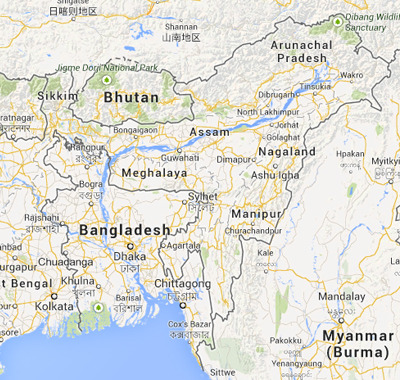
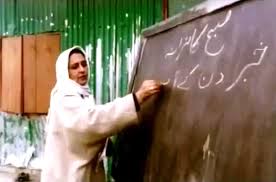

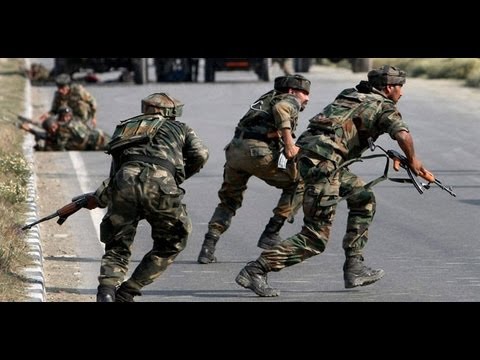
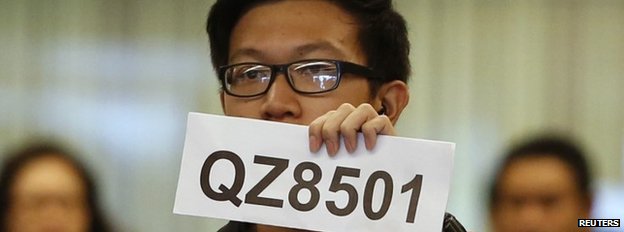




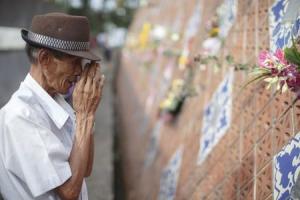






Recent Comments